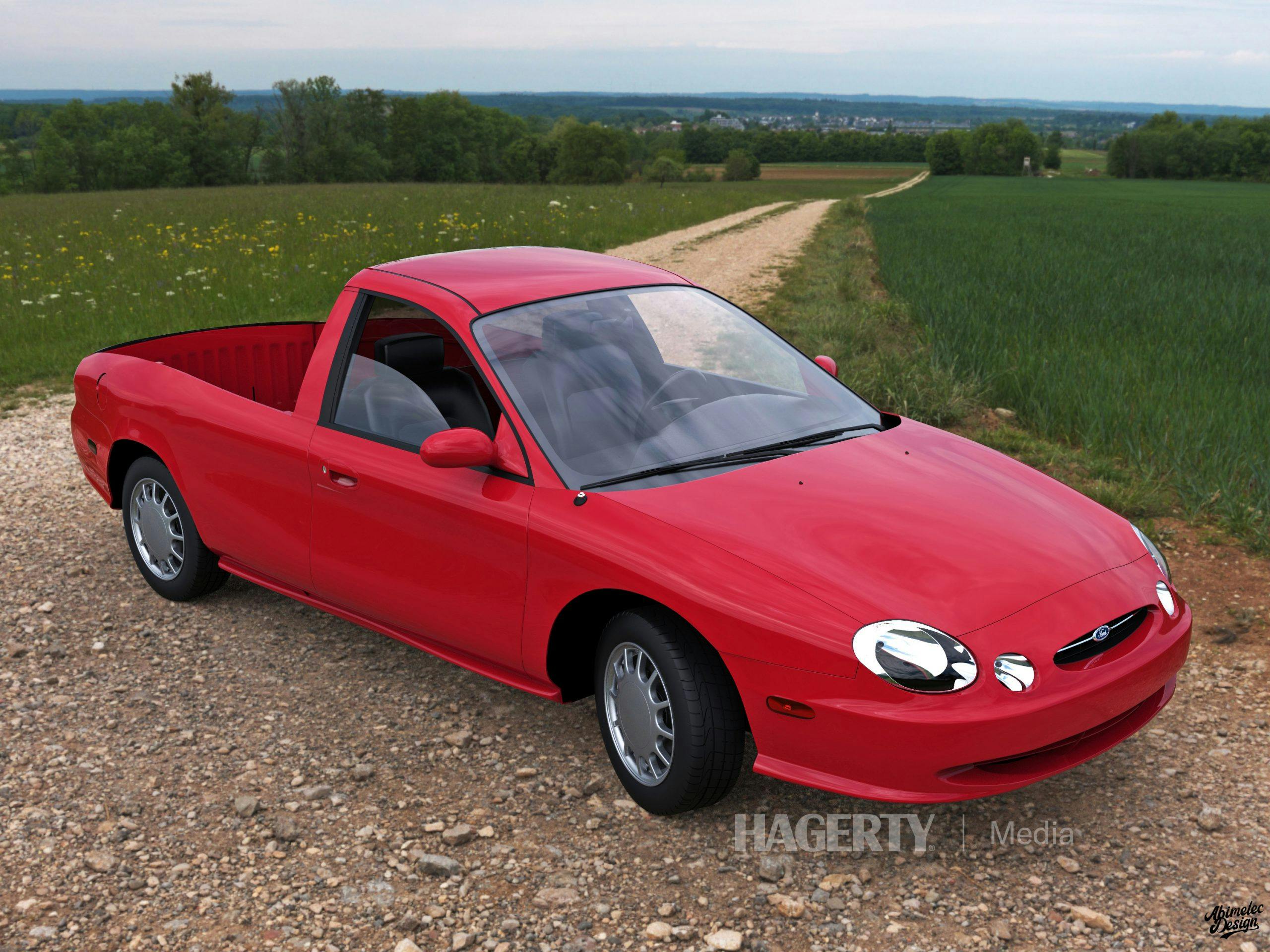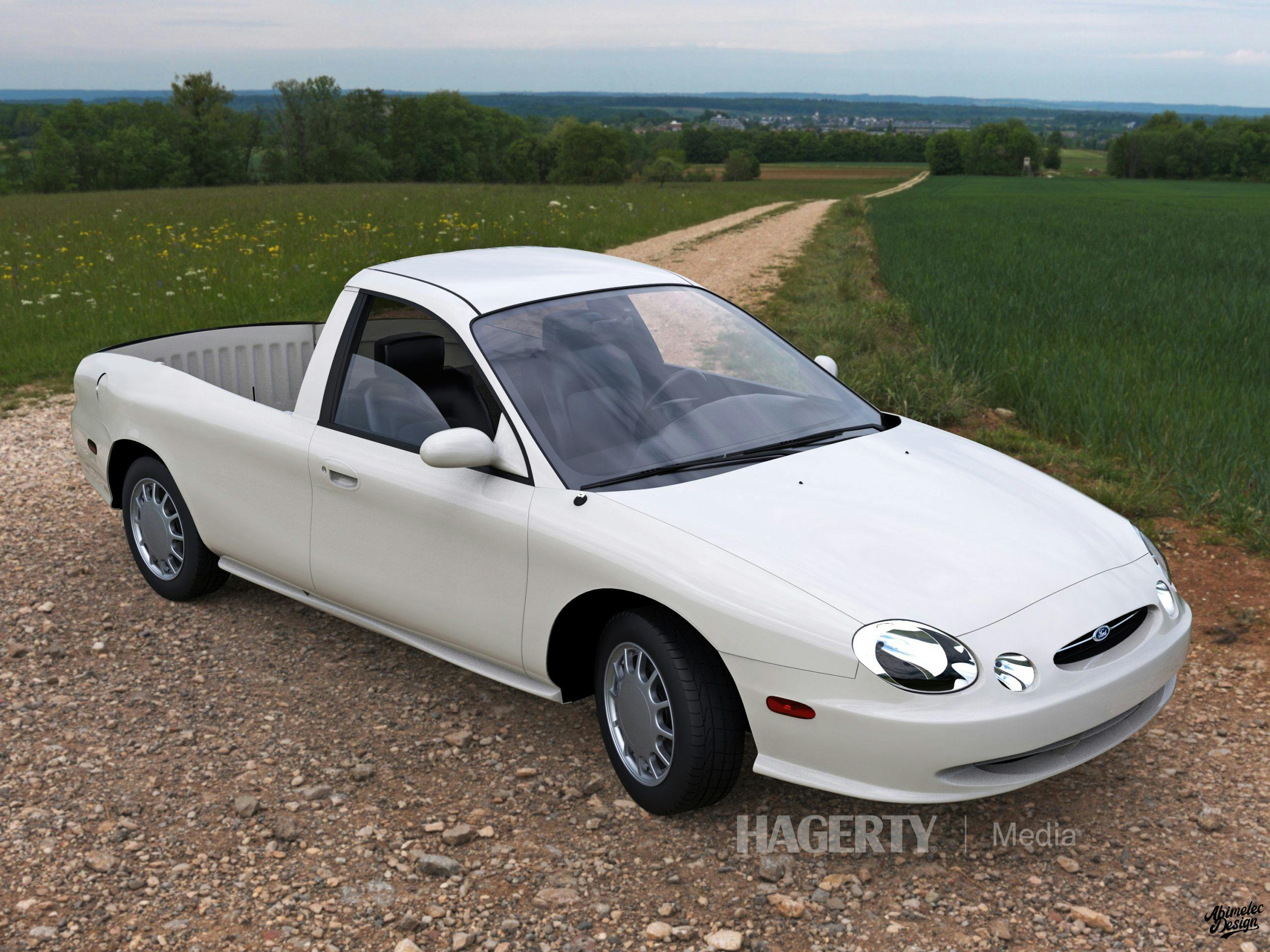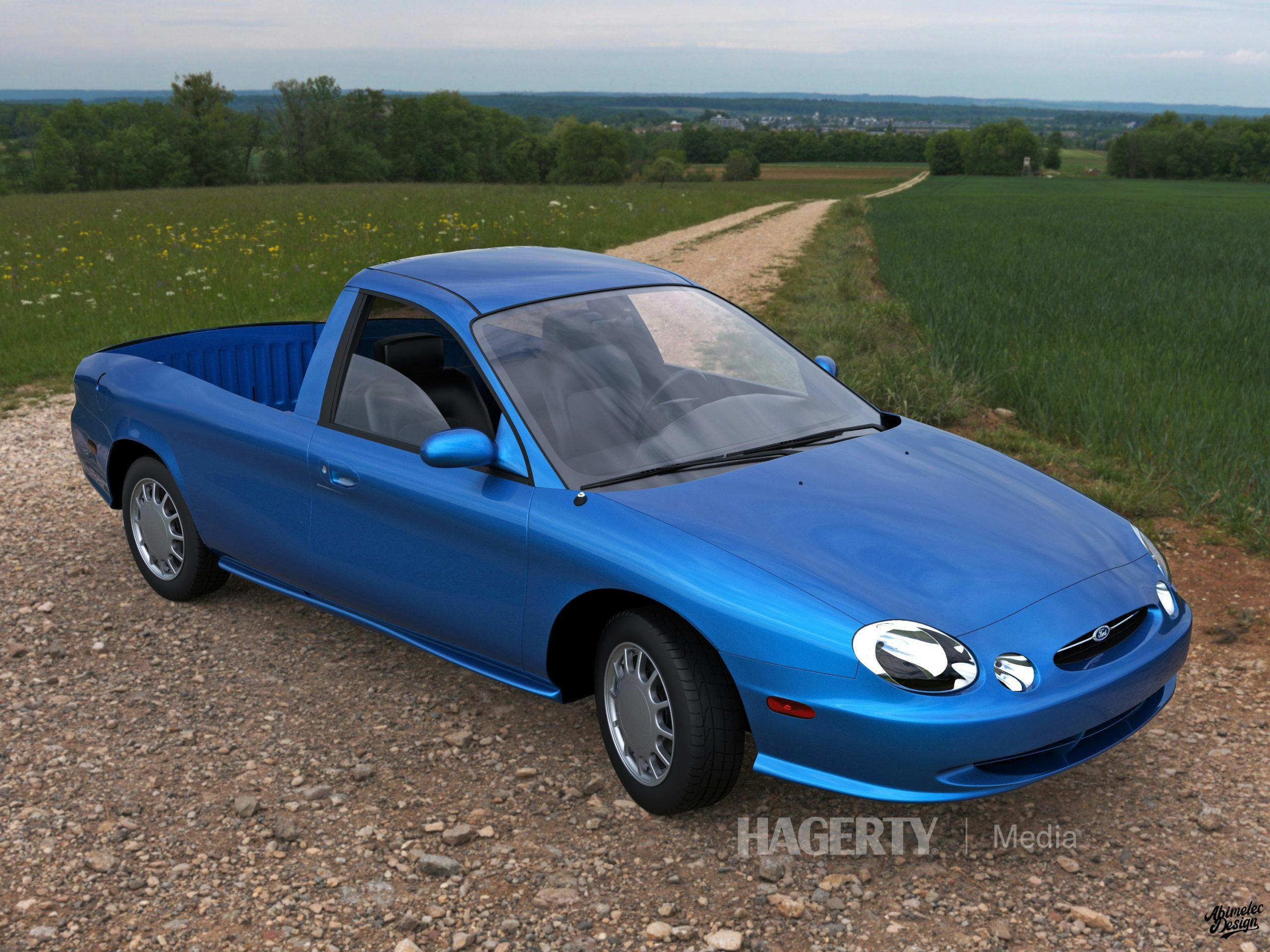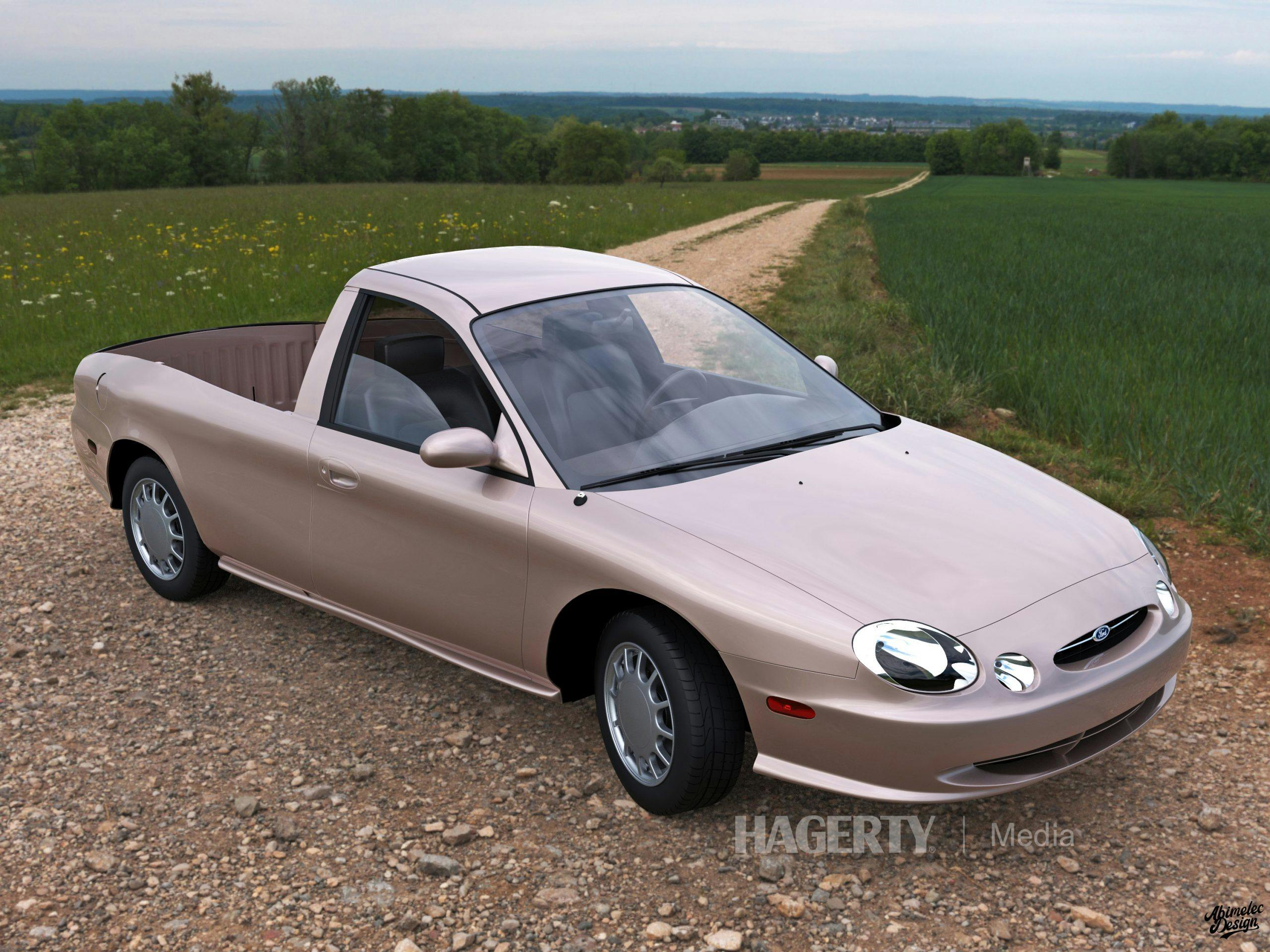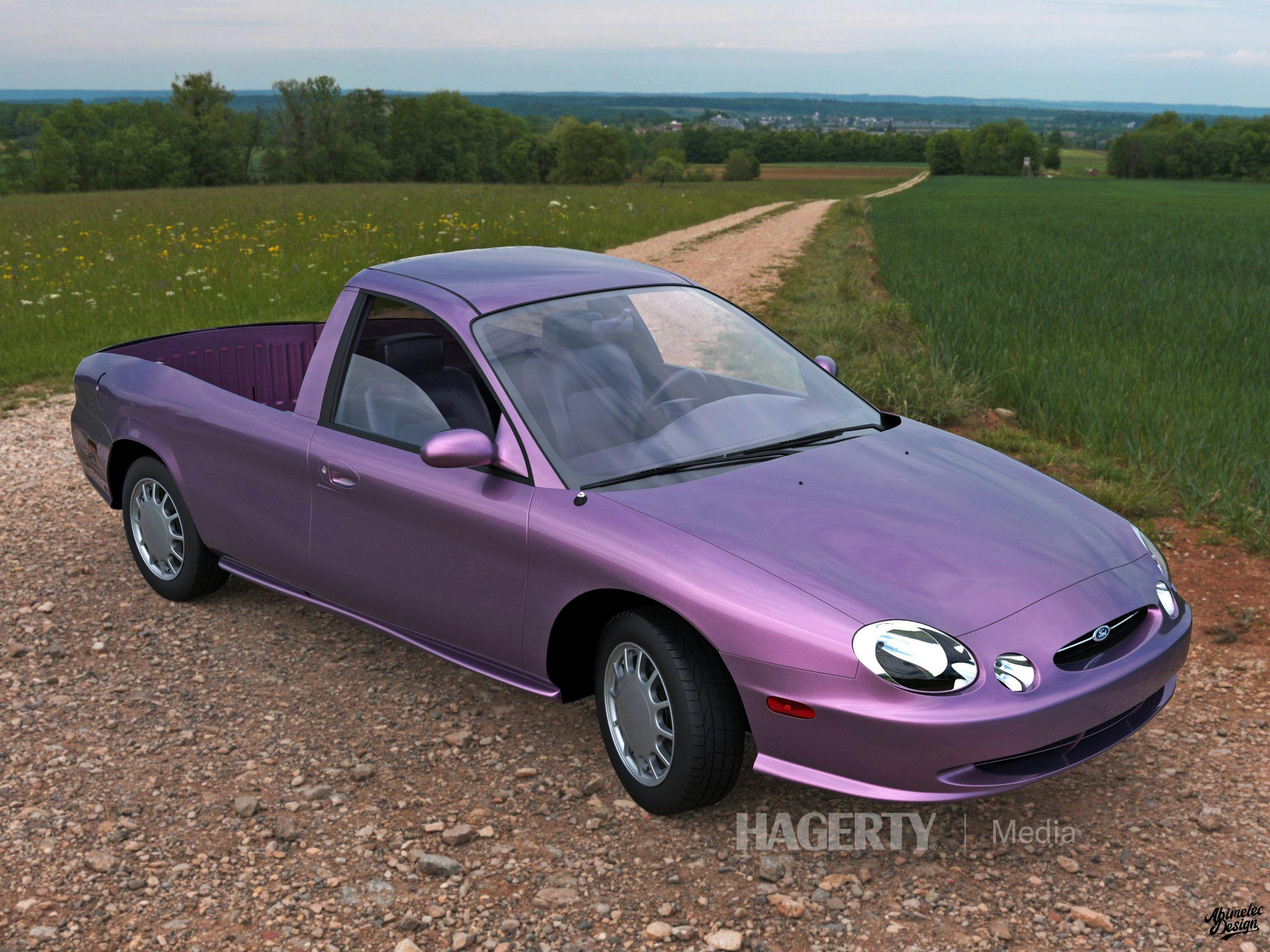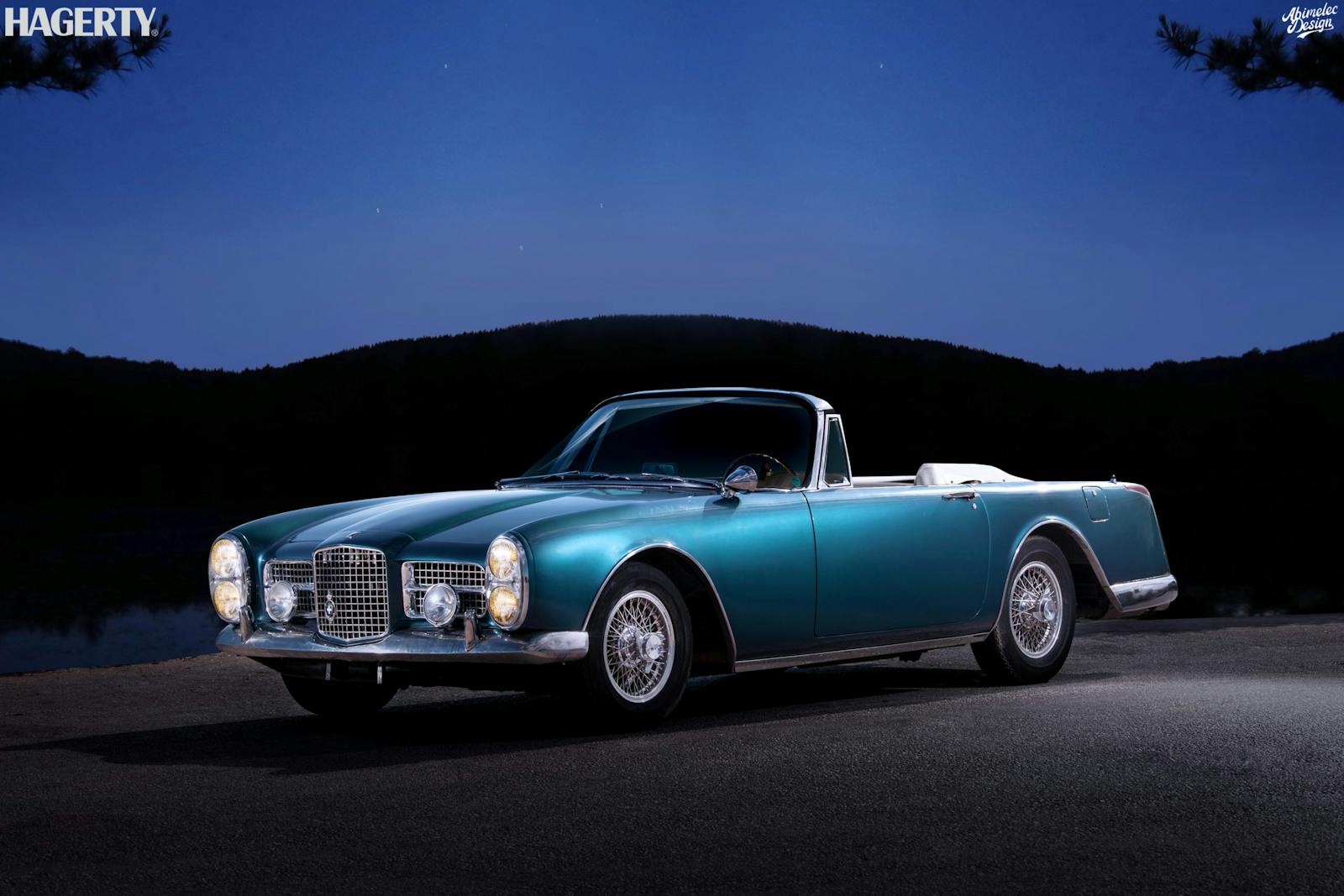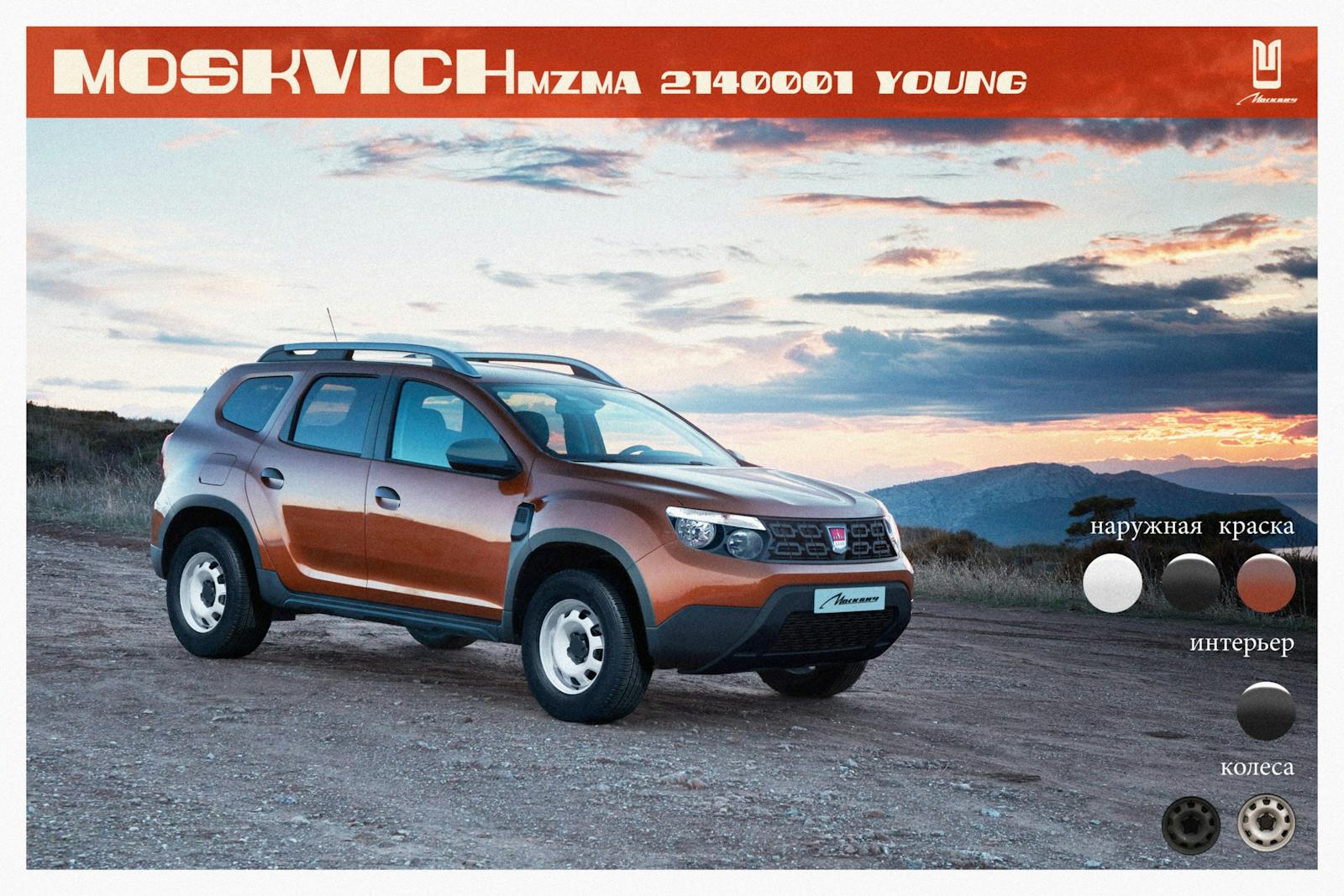What If? 1997 Ford Ranchero
Welcome to What If, a new feature from imaginative illustrator Abimelec Arellano and Hagerty. We’ll be taking you back in time—and possibly forward into the future—to meet alternative-universe automobiles. Even better, our time machine is working well enough to bring “short take” reviews along with the photographs and advertisements. Buckle up and enjoy the ride! — Jack Baruth
(Originally published in America Today, August 1996 issue)
It’s a close race, but as of right now it looks like the Ford Taurus is going to be the best-selling car of the 1996 model year. Not the best-selling vehicle, of course; it’s only fourth place in that regard, selling just about five-eighths of the showroom volume enjoyed by the Ford F-150, America’s biggest dog in the showroom fight. The people have spoken, and what they’re saying is that they really, really like trucks.
Ford has a plan to bridge the gap.
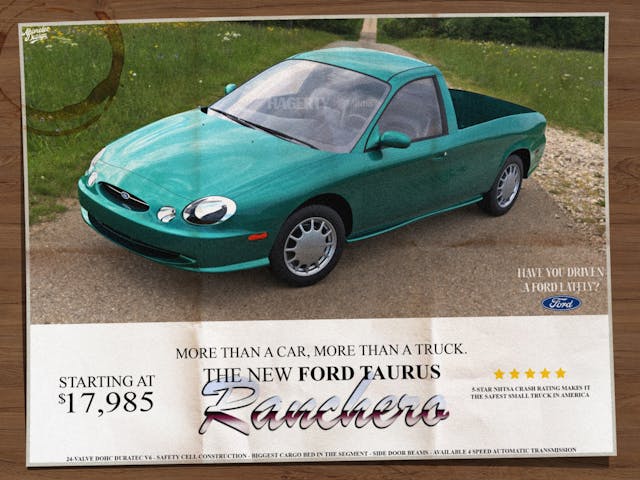
The sedan-based pickup used to be a big deal. Two of the Big Three offered a mid-sized take on the formula through the Seventies, with Chrysler selling a 183.7-inch front-wheel-drive Rampage pickup based on the Charger/024 in the space of time between the discontinuation of the 220-inch-long Ford Ranchero in 1979 and the final 201.6-inch Chevrolet El Camino of 1987. The new-for-1997 Ford Ranchero has dimensions close to that of the Chevrolet. Its 199.6-inch length will be curiously familiar to people who read the 1996 Taurus brochure; that’s how long the wagon is, which is no coincidence.
As is usually the case with these vehicles, you can’t tell the difference between a Taurus wagon and a Ranchero from the driver’s seat—unless, that is, you want to slide the seat back. The Ranchero retains the unique “flip/fold” bench seat from the Taurus GL, but the rearward movement of that seat is surprisingly limited, all the better to make room for the 78-inch bed behind a corrugated firewall. Drivers who break the six-foot mark, or who like to recline their seats, won’t be totally comfortable.
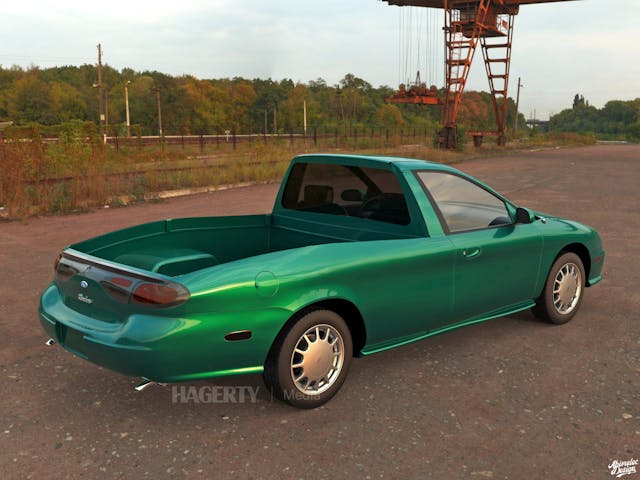
This Ranchero, like the Dodge Rampage but unlike any vehicle to bear this nameplate in the past, is a unit-body vehicle using unique side stampings welded to the same floor stampings as the Taurus wagon. The controversial styling of the 1996 Taurus is not exactly toned down by having a distinct curve to the sides of the Ranchero’s truck bed, while the unusual taillight styling from both sedan and wagon is slightly modified for a drop-down tailgate.
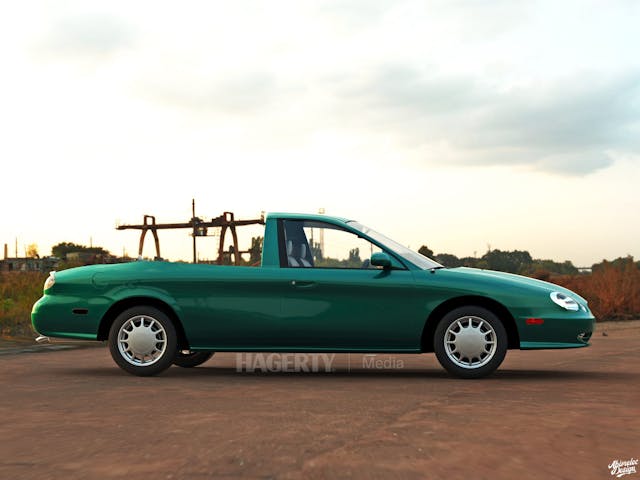
Ford was taken aback by widespread criticism of 1996 Taurus pricing, responding halfway through the year with a lower-cost “Taurus G” to sit beneath the GL and LX models. It is unlikely the Ranchero will come in for similar griping, however, as the value proposition is superb. The base price of under $18,000 for a Ranchero GL includes features like air conditioning and power locks. Powertrain choices start with the unusual standard combination of the 24-valve, 200-horsepower Duratec V-6 from the Taurus LX and the three-speed automatic from the previous-generation Taurus. The four-speed automatic that is standard on the Taurus LX is also standard in the $22,950 Ranchero LX, which covers the flip-fold bench with leather and adds alloy wheels as standard.

With a curb weight almost 150 pounds beneath that of its Taurus sedan cousin, the short-geared three-speed automatic, and the 200-horse Duratec, the base Ranchero is surprisingly rapid. Unfortunately, the rear end can step out under hard braking in the middle of a corner, leading to a surprise termination of our test drive when our Jade Green Ranchero tester exited the Pacific Coast Highway and landed nose-first in deep beach sand, producing a visual tableau not unlike that of the famous “Cadillac Ranch.”
We think the Ranchero is just the thing to wean America from its full-sized pickup-truck addiction. Look for the Taurus/Ranchero pair to become the best-selling vehicle in the country next year. Ford truly had a better idea, but they need to strike while the iron is hot, since a “Camry HiLux” is supposedly in the works for 1998.

